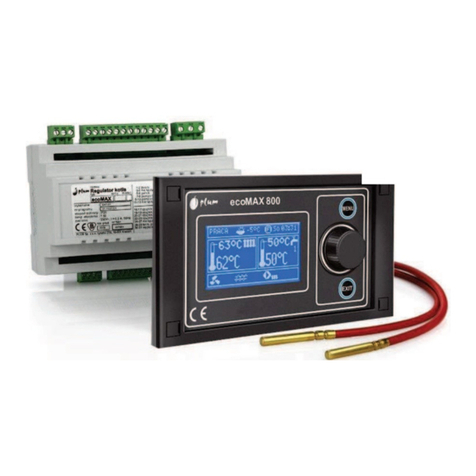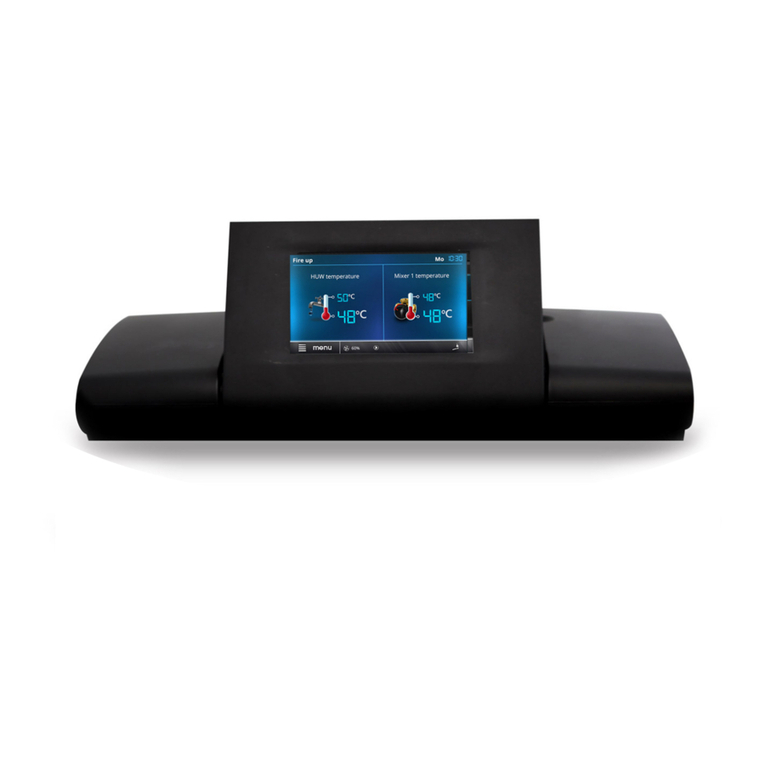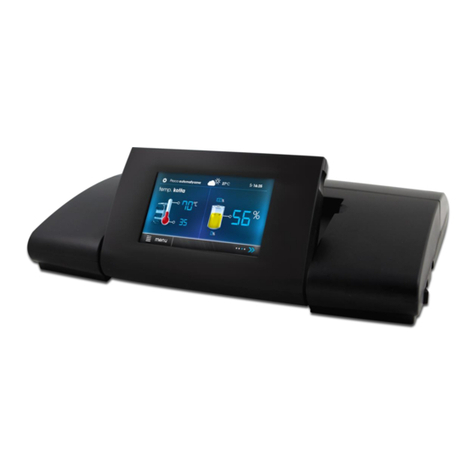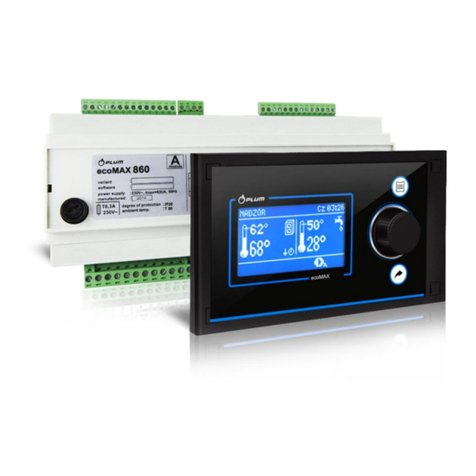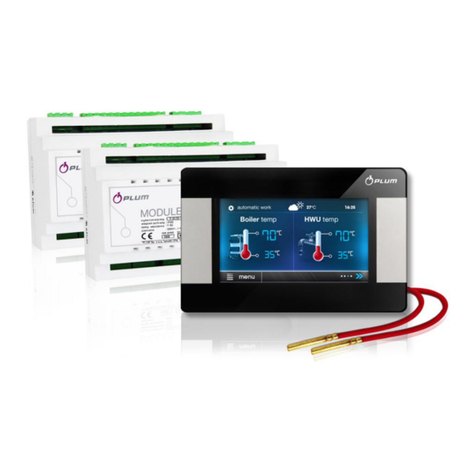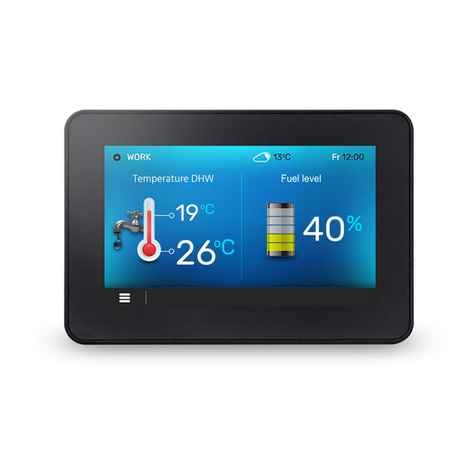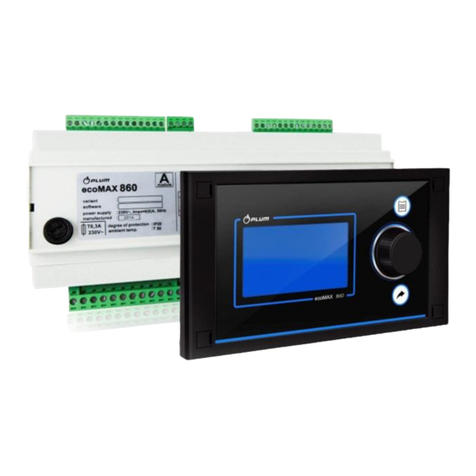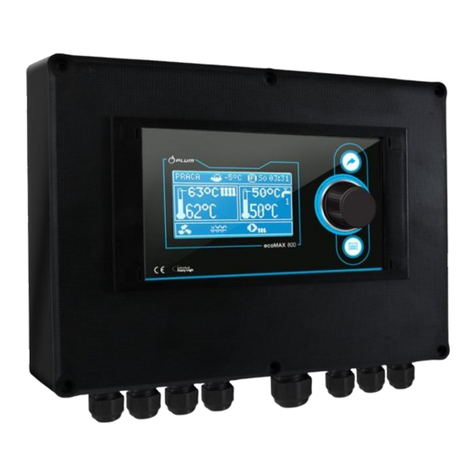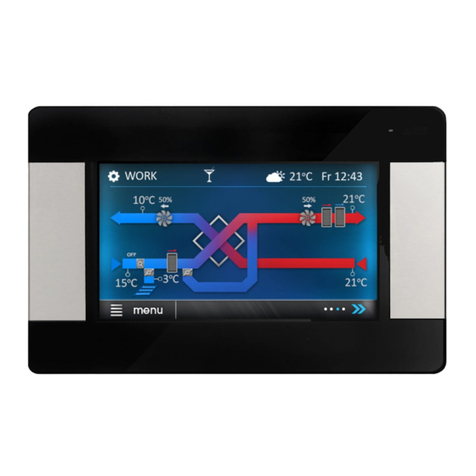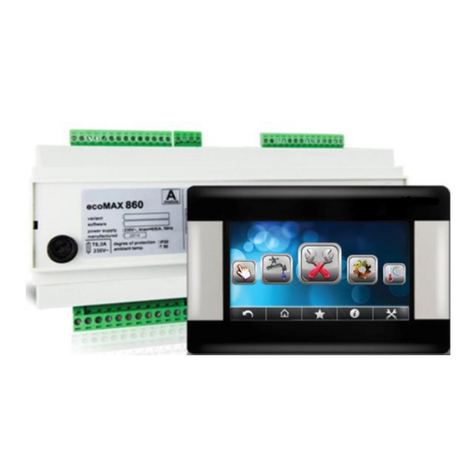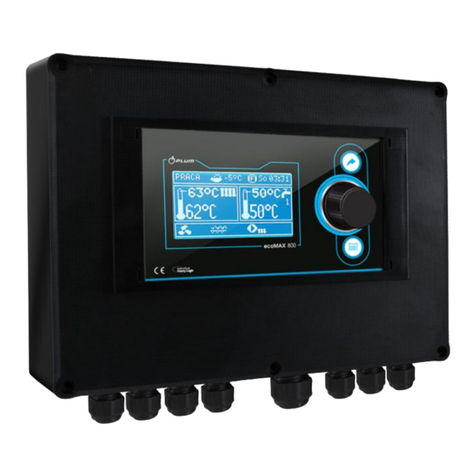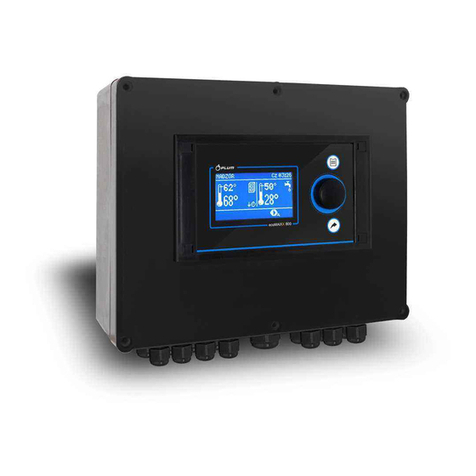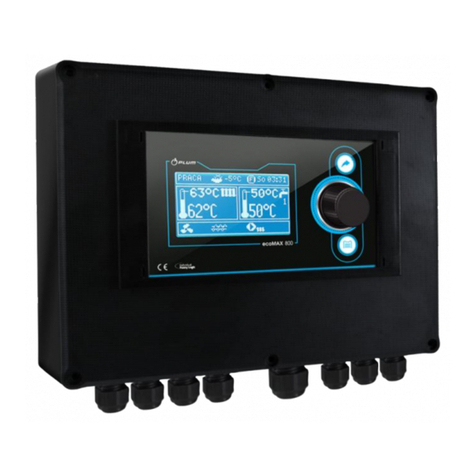
CONTENTS
1RECOMMENDATIONS REGARDING SAFETY ........ 4
2GENERAL ............................................................. 5
3INFORMATION ABOUT DOCUMENTATION ......... 5
4STORAGE OF DOCUMENTATION......................... 5
5APPLIED SYMBOLS .............................................. 5
6DIRECTIVE WEEE 2002/96/EG ACT ON
ELECTRICAL AND ELECTRONIC EQUIPMENT ................... 5
INSTRUCTION MANUAL................................ 7
7STRUCTURE –MAIN MENU................................. 8
8OPERATING THE REGULATOR ............................. 9
8.1 DESCRIPTION OF DISPLAY MAIN WINDOW ................. 9
8.2 SWITCHING ON AND OFF THE BOILER...................... 10
8.3 SETTINGS PRESET TEMPERATURE..................... 10
8.4 FIRING-UP ..................................................... 10
8.5 INCANDESCENCE............................................... 10
8.6 OPERATION ....................................................... 10
8.7 REGULATION MODE............................................ 11
8.8 SUPERVISION ................................................ 11
8.9 BURNING OFF................................................ 12
8.10 CLEANING...................................................... 12
8.11 STOP.............................................................. 12
8.12 GRATE ........................................................... 12
8.13 DOMESTIC HOW WATER SETTINGS ......................... 12
8.14 SETTING HUW PRESET TEMPERATURE................... 13
8.15 ENABLING THE SUMMER FUNCTION .................... 13
8.16 DISINFECTION HUW CONTAINER .......................... 13
8.17 HUW CIRCULATION ........................................... 13
8.18 MIXER CIRCUITS SETTINGS ................................... 13
8.19 WEATHER CONTROLLED ...................................... 14
8.20 DESCRIPTION OF NIGHT TIME DECREASE SETTINGS .... 15
8.21 FUEL LEVEL SETUP .............................................. 15
8.22 FEEDER EFFICIENCY TEST ...................................... 16
8.23 OPERATION WITH ADDITIONAL FEEDER ................... 16
8.24 INFORMATION................................................... 16
8.25 MANUAL CONTROL ............................................ 16
8.26 FAVOURITE MENU.............................................. 17
8.27 ROOM PANEL ECOSTER TOUCH.......................... 17
8.28 INTERNET MODULE............................................. 17
9DESCRIPTION OF ALARMS................................. 17
9.1 EXCEEDING MAX.BOILER TEMP............................. 17
9.2 MALFUNCTION OF BOILER TEMP.SENSOR ............... 17
9.3 EXCEEDING MAX.BURNER TEMP. .......................... 17
9.4 BOILER TEMPERATURE SENSOR DAMAGE................. 18
9.5 BURNER TEMPERATURE SENSOR DAMAGE ............... 18
9.6 FEEDER CONTROL SYSTEM FAILUER ........................ 18
9.7 UNSUCCESSFUL FIRING ATTEMPT........................... 18
9.1 BOILER OVERHEATING STB OPEN CONTACT ............. 18
9.2 LACK OF COMMUNICATION .................................. 18
9.3 UNSUCCESSFUL ATTEMPT OF BUFFER LOADING......... 18
10 OTHERS ............................................................. 18
10.1 POWER SUPPLY DECAY ........................................ 18
10.2 ANTI-FREEZING PROTECTION ................................ 18
10.3FUNCTION OF PROTECTING PUMPS AGAINST
STAGNATION ..................................................... 19
10.4 REPLACEMENT OF MAINS FUSE ............................. 19
10.5 REPLACEMENT OF CONTROL PANEL........................ 19
10.6 LAMBDA SENSOR ............................................... 19
INSTALLATION AND SERVICE SETTINGS....... 21
11 HYDRAULIC DIAGRAMS .....................................22
11.1 DIAGRAM 1.......................................................22
11.2 DIAGRAM 2.......................................................23
11.3 DIAGRAM 3.......................................................24
12 TECHNICAL DATA...............................................25
13 CONDITIONS OF STORAGE AND TRANSPORT....25
14 REGULATOR INSTALLATION...............................25
14.1 ENVIRONMENTAL CONDITIONS ..............................25
14.2 INSTALLATION REQUIREMENTS ..............................25
14.3 ASSEMBLY CONTROL PANEL ..................................25
14.4 MOUNTING OF WORKING MODULE ........................26
14.5 IP PROTECTION RATE...........................................27
14.6 CONNECTING ELECTRICAL SYSTEM ..........................28
14.7 ELECTRIC SCHEME...............................................29
14.8 CONNECTION OF TEMPERATURE SENSORS................31
14.9 CONNECTING WEATHER SENSOR ............................31
14.10 CHECKING TEMPERATURE SENSORS ........................31
14.11 CONNECTION OF MIXERS ROOM THERMOSTAT..........32
14.12 CONNECTION OF BOILER'S ROOM THERMOSTAT ........32
14.13 CONNECTION OF RESERVE BOILER ..........................32
14.14 CONNECTION OF ALARM SIGNALLING......................33
14.15 CONNECTION OF MIXER .......................................33
14.16 CONNECTING TEMPERATURE LIMITER STB...............34
14.17 CONNECTING ROOM PANEL ..................................34
15 SERVICE MENU ..................................................35
16 SERVICE SETTINGS .............................................37
16.1 BURNER .........................................................37
16.2 BOILER ...........................................................38
16.3 CH AND HUW ..................................................39
16.4 BUFFER ..........................................................40
16.5 MIXER ............................................................40
16.6 HOUTPUT......................................................41
16.7 OTHTRS..........................................................42
17 SOFTWARE UPGRADE........................................42
